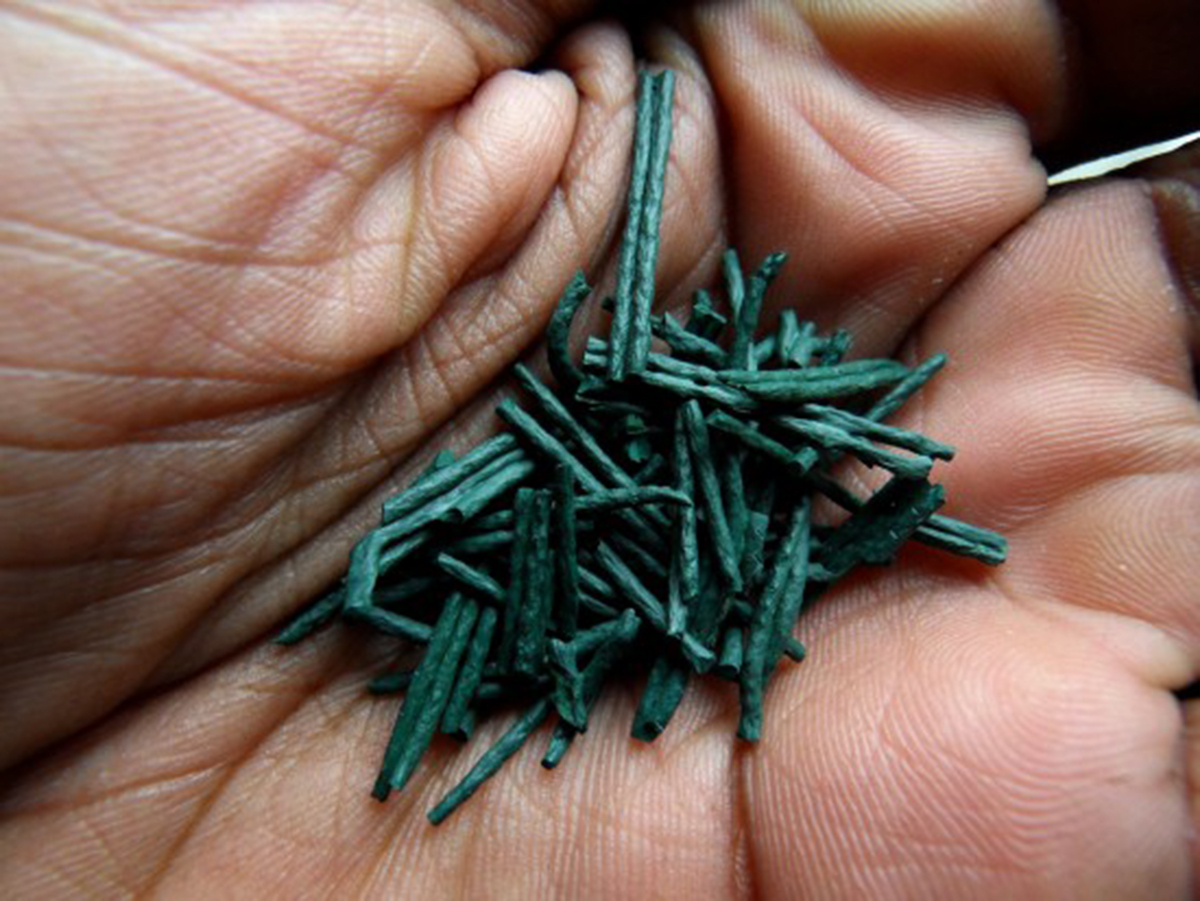Table of Contents
The blue-green bacterium Spirulina tends to get a bad rap from the nutritional science establishment.
I had never really heard of it until I took a graduate course in nutrition in Germany in the 1990's. My professor was no fan of spirulina (the name of the bacterium is capitalized, but the name of the product is not). "Spirulina is an anti-vitamin!" he roared. "It destroys methylcobalamin (vitamin B12)!"
It turns out this isn't really true, but no questioning was permitted on this issue in that class. "Anti-vitamin activity" became a commonly repeated concern about the product.

Spirulina Makers Overcome Early Errors
Then in the late 1990's, the rumor mill created an even worse label for spirulina products. They were supposedly contaminated with sewage. Although Earthrise Nutritionals began producing spirulina in pristine conditions in the desert in 1976, in the 1980's was also collected from relatively pristine waters just off the shore of the Big Island of Hawaii. If you have ever gone wading on the beach on the Kona side of the island, you may have noticed this slippery slimy substance that gets between your toes. Tiny fish love to eat it. That's mostly spirulina. A major American health products manufacturer, however, recognized that labor costs were much lower in Mexico, and had started collecting it at Lake Texcoco in the Valley of Mexico, in greater Mexico City. One doesn't associate cleanliness with runoff water in Mexico City, and spirulina got an even worse reputation.
Spirulina Myths Dispelled
Neither of these concerns is valid today. Scientific research in the 1990's (which my professor misunderstood) didn't find that spirulina contains "anti-B12." It found that spirulina produces vitamin B12, but in a form that cannot be used by the human body. It's not so much an anti-vitamin as a pseudo-vitamin; the compound in spirulina (which has the chemical name methyladeninylcobamide, in case you're interested) does some of the things that B12 does in humans for the bacteria. It's only a problem if animals that feed on bacteria don't get vitamin B12 from another source. It doesn't circulate through the human body so it can track down and destroy active vitamin B12.
READ Food Is Medicine: Superfoods to Improve Your Mood
Modern Spirulina Is Produced Under Pristine Conditions
There's also relatively little reason to be concerned about contamination in spirulina today. The world's largest spirulina farm isn't along an ocean or a lake, but rather in a remote part of the desert in Southern California. Spirulina is grown in huge (5000-square meter) open pools lined with food-grade plastic with carbonation bubbled into the purified water to encourage growth. The company that owns this farm works closely with producers in Hawaii, China, and Thailand. Producers in Germany and Canada grow spirulina indoors in giant vats. Both systems minimize contamination. There are "stray" bacteria in all spirulina products, but since the spirulina and any other bacteria are sterilized before they are bottled, there haven't been any reports of illness from contaminated spirulina since 2008. Earthrise (the desert grown spirulina) and Prime Chlorella are among a number of unquestionably safe products.
- Vardaka E, Kormas KA, Katsiapi M, Genitsaris S, Moustaka-Gouni M. Molecular diversity of bacteria in commercially available "Spirulina" food supplements. PeerJ. 2016 Jan 21
- 4:e1610. doi: 10.7717/peerj.1610. eCollection 2016. PMID: 26819852.
- Photo courtesy of sweetonveg: www.flickr.com/photos/sweetonveg/4987719694/
- Photo courtesy of sweetonveg: www.flickr.com/photos/sweetonveg/4987719694/
- Photo courtesy of PWRDF: www.flickr.com/photos/45005153@N07/5905978844/


Your thoughts on this